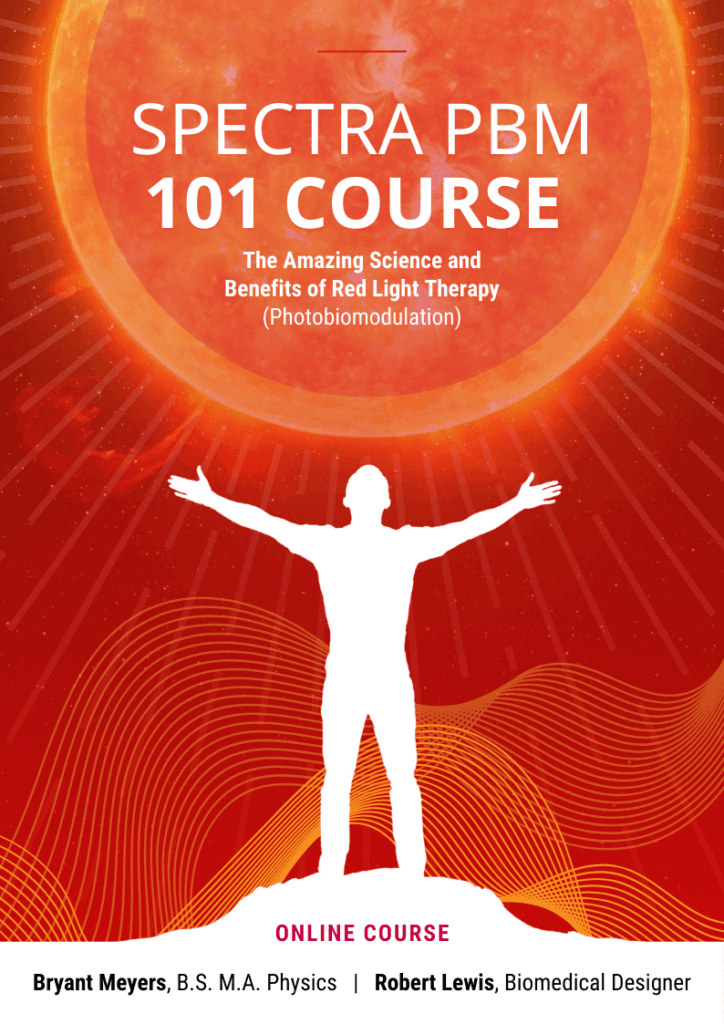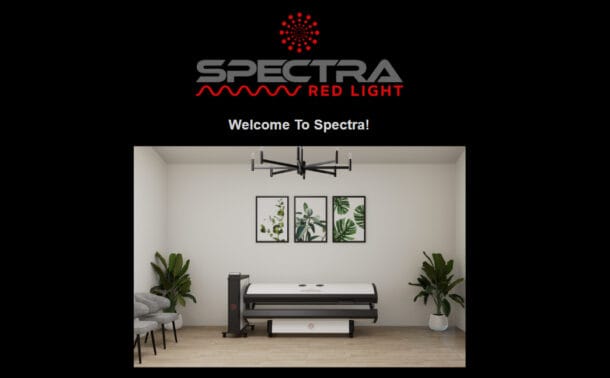Red Light Therapy (RLT) is a wellness innovation, captivating a variety of industries from healthcare to beauty and fitness. This therapy harnesses the power of specific wavelengths within the red and near-infrared light spectrum, offering a non-invasive solution to enhance cellular function and promote overall health. The purpose of this article is to explain how RLT can be a beneficial addition to your business, enriching both the service quality and the client experience.
Red Light Therapy operates on the principle of photobiomodulation. This scientifically-backed mechanism involves the absorption of red and near-infrared light by mitochondria, the power generators within our cells. This absorption elevates the production of adenosine triphosphate (ATP), the energy currency of the cell, thereby enhancing cellular metabolism and promoting tissue repair and regeneration. By offering a broad spectrum of wavelengths, RLT can be finely tuned to optimize various physiological responses, from deep tissue repair to surface skin rejuvenation.
This introduction of Red Light Therapy into your business is not merely an adoption of new technology but a strategic enhancement to your existing services. Through a detailed exploration of its biological impacts and technical applications, this article will highlight the versatility and efficacy of RLT, making a compelling case for its integration into diverse business models. Let’s explore how this innovative therapy can be leveraged to not only attract new clients but also to significantly improve the quality of life for existing ones, thereby driving business growth and customer satisfaction.
Business Advantages of Offering Red Light Therapy
Integrating Red Light Therapy (RLT) into a business model provides numerous strategic advantages, leveraging its broad spectrum of wavelengths to cater to diverse health and wellness needs. The inclusion of RLT can differentiate a business within the competitive market, enhance customer satisfaction, and generate significant new revenue streams. Here’s a look at these business benefits:
Market Differentiation
RLT is offering due to its scientific backing and broad range of applications, from skin rejuvenation and pain management to mental health improvements and enhanced athletic performance. By incorporating RLT, businesses can set themselves apart, offering a unique value proposition that taps into the growing consumer interest in non-invasive health therapies. The ability to offer a treatment that uses scientifically proven methods such as photobiomodulation to enhance cellular function and tissue repair can strongly appeal to health-conscious consumers.
Enhanced Customer Satisfaction
Businesses that provide RLT can see a direct impact on customer satisfaction due to the immediate and visible benefits it offers. Whether it’s improving skin appearance, reducing pain, or enhancing the general feeling of well-being, the broad spectrum of wavelengths used in RLT ensures that treatments can be tailored to meet diverse client needs effectively. This personalization and the visible results it yields can enhance client loyalty and word of mouth referrals, which are invaluable for business growth.
Revenue Generation
RLT can be a lucrative addition to any business model. Facilities can charge for RLT sessions as standalone offerings or include them as part of membership packages or wellness programs. The flexibility in billing models, from per-session charges and package deals to premium memberships, allows businesses to attract a wide range of customers. Furthermore, the cost-effectiveness of RLT devices in terms of maintenance and the minimal consumables required ensure a favorable return on investment (ROI). Try our Red Light Bed Cashflow & ROI Calculator to get an accurate estimate.
Attraction of a Diverse Clientele
The non-invasive nature and proven efficacy of RLT make it appealing to a wide demographic, including older adults looking for pain relief and cognitive function support, athletes in need of quicker recovery, and individuals seeking cosmetic improvements. This broad appeal can help businesses tap into various market segments simultaneously, increasing their customer base.
Ease of Integration
RLT devices are generally easy to integrate into existing business operations without the need for extensive modifications or highly specialized training. This ease of integration, combined with the device’s user-friendly nature, means businesses can start offering RLT services quickly, ensuring they capitalize on market trends without significant downtime.

Biological and Physiological Benefits of Red Light Therapy (RLT)
Red Light Therapy (RLT), leveraging the principles of photobiomodulation, is increasingly recognized for its extensive health benefits across a spectrum of applications, from cognitive enhancement to pain relief and skin health. Here we explore several significant benefits highlighted by recent scientific studies.
Cognitive Enhancement and Mental Health
Recent research underscores the potential of transcranial Photobiomodulation (tPBM) in improving cognitive functions and mental health, particularly among older adults with mild cognitive impairment (MCI). A study titled “Photobiomodulation improves frontal lobe cognitive functions and mental health of older adults with non-amnestic mild cognitive impairment: Case studies” notes, “These findings provide preliminary support for tPBM as a non-invasive intervention to improve the frontal lobe cognitive functions and mental health of older adults with MCI.” [1] This suggests that RLT can enhance neural efficiency and overall mental well-being, offering a promising tool for managing conditions associated with cognitive decline.
Sports Performance and Recovery
The application of RLT in sports and athletic performance has garnered attention for its effectiveness in improving endurance and recovery. The study titled “Red Light and the Sleep Quality and Endurance Performance of Chinese Female Basketball Players” demonstrates how red-light illumination positively influenced sleep quality and endurance performance variables in athletes. This enhancement in sleep quality can be attributed to RLT’s ability to regulate circadian rhythms and promote deeper sleep states, which are crucial for athletic recovery and performance. [2]
Pain Management
RLT has been proven to offer a non-invasive, safe, and drug-free alternative for managing pain associated with various musculoskeletal conditions. According to the study “Low-intensity LASER and LED (photobiomodulation therapy) for pain control of the most common musculoskeletal conditions,” it offers “a non-invasive, safe, drug-free, and side-effect-free method for pain relief of both acute and chronic musculoskeletal conditions as well as fibromyalgia.“[3] This highlights RLT’s capacity to reduce inflammation and enhance tissue repair, providing relief from discomfort without the side effects commonly associated with pain medications.
Dermatological Applications
In the field of dermatology, RLT is praised for its ability to stimulate healing, reduce inflammation, and aid in skin rejuvenation. The study titled “Low-level laser (light) therapy (LLLT) in skin: stimulating, healing, restoring” finds that “LLLT appears to have a wide range of applications of use in dermatology, especially in indications where stimulation of healing, reduction of inflammation, reduction of cell death and skin rejuvenation are required.” [4] This makes RLT a versatile tool in treating a variety of skin conditions, enhancing skin appearance, and speeding up the healing process of dermal injuries.
Through these diverse applications, Red Light Therapy emerges as a potent modality in medical and wellness settings, offering benefits that span cognitive, physical, pain management, and dermatological health. The broad spectrum of wavelengths employed in RLT allows for targeted interventions, making it an adaptable and effective therapy.

Implementing Red Light Therapy in Various Sectors
The adoption of Red Light Therapy (RLT) across various sectors highlights its versatility and broad range of applications. Here’s how different sectors can implement RLT to leverage its benefits, focusing on the broad spectrum of wavelengths that optimize physiological responses and enhance overall wellness:
Healthcare and Red Light Therapy
- Dermatology: Dermatologists can utilize RLT for its anti-inflammatory and collagen-stimulating properties, which are effective in treating skin conditions like acne, eczema, and psoriasis, as well as enhancing skin rejuvenation and reducing signs of aging.
- Physical Therapy: Physical therapists can integrate RLT to accelerate recovery from musculoskeletal injuries by enhancing circulation, reducing inflammation, and stimulating tissue repair through enhanced ATP production in cells.
- Alternative Medicine: Practices such as acupuncture or chiropractic care can include RLT as a complementary therapy to improve outcomes in pain management and tissue healing, utilizing its non-invasive nature and the biological mechanism of enhancing cellular function and health.
Wellness and Spa Integrating RLT
- Wellness Centers: These facilities can offer RLT as part of their wellness programs to promote relaxation, reduce stress, and improve overall well-being, capitalizing on RLT’s ability to modulate cortisol levels and increase endorphins.
- Spas: Spas can use RLT to attract clients interested in skin care technologies, offering treatments that provide skin rejuvenation, enhanced elasticity, and overall improved complexion through the stimulation of collagen and elastin production.
Fitness Centers with RLT Devices
- Recovery: Gyms and sports facilities can provide RLT areas where athletes can undergo sessions to aid in muscle recovery, reduce soreness, and increase circulation, thereby enhancing their performance and reducing the risk of injury.
- Performance Enhancement: By incorporating RLT into regular training programs, fitness centers can offer athletes and fitness enthusiasts the added benefit of improved muscular endurance and strength, as facilitated by the deeper tissue penetration of near-infrared wavelengths.
Hospitality + Red Light Therapy
- Hotels and Resorts: In the competitive field of hospitality, offering RLT services can significantly enhance a hotel or resort’s appeal, particularly in the wellness tourism sector. Guests can enjoy rejuvenating sessions that improve their skin health, relax their muscles, and enhance their mood, contributing to an overall exceptional guest experience.
- Corporate Wellness: Businesses can implement RLT in their corporate wellness programs to improve employee well-being, potentially reducing healthcare costs and improving productivity through the therapy’s benefits on mental clarity and stress reduction.
When implementing RLT, industries should consider:
• Customization: Tailoring the wavelength and dosage based on the specific needs and outcomes desired for their clientele.
• Training: Ensuring staff are adequately trained in the operation of RLT devices and understanding of photobiomodulation to safely and effectively administer sessions.
• Regulatory Compliance: Staying informed about and compliant with local health regulations and standards for the use of therapeutic devices.
Technical Aspects of Red Light Therapy Devices
To effectively harness the benefits of Red Light Therapy (RLT), understanding the technical specifications and operational standards of RLT devices is crucial. These devices are engineered to deliver specific wavelengths of light to target various biological and physiological mechanisms, enhancing their therapeutic efficacy.
RLT Device Types and Configurations
RLT devices come in various forms including panels, beds, and handheld units, each designed for different applications and coverage areas. Panels are typically used for full-body sessions, beds for a more immersive experience covering the entire body, and handheld devices for targeted therapy, focusing on specific areas of the body like the face or joints.
Wavelength Specifications for Red Light Therapy
A critical component of RLT devices is their ability to emit light within precise wavelengths. The efficacy of RLT depends on utilizing a broad spectrum of red to near-infrared light, generally within the ranges of 630-700 nm for red light and 780-1100 nm for near-infrared. Each wavelength penetrates different layers of tissue, with red light targeting more superficial layers for skin health and near-infrared reaching deeper tissues for muscle recovery and joint health.
Power Density and Irradiance of The Red Light
The power density and irradiance of a device determine how much light energy is delivered to the skin per unit area. These metrics are pivotal for ensuring that each session provides a therapeutic dose without risking tissue damage. Effective RLT devices maintain a balance where the light is intense enough to penetrate tissues and stimulate cellular mechanisms but not so intense as to cause heat damage or discomfort.
Energy Output and Dosage Control IN RLT Devices
A proper dosage of light is essential for achieving desired outcomes. RLT devices should have adjustable settings to control the duration and intensity of exposure. This customization enables practitioners to tailor sessions based on individual client needs, optimizing the therapeutic effects whether it’s for skin rejuvenation, pain relief, or muscle recovery.
Safety Standards and Compliance of RLT Companies
Safety is paramount in the design and operation of RLT devices. High-quality devices are built to meet rigorous safety standards and are often FDA-cleared for various uses.
By understanding these technical aspects, businesses can select the appropriate RLT devices that not only adhere to high safety and efficacy standards but also align with the specific therapeutic needs of their clientele. Explore the Spectra Products page to find the highest quality products. The right equipment ensures that the broad spectrum of wavelengths is utilized effectively, maximizing the biological benefits of Red Light Therapy across a range of applications.

The integration of RLT across various industries not only enhances the value of services offered but also stands as a testament to the understanding of non-invasive health interventions. By harnessing the power of a broad spectrum of wavelengths, RLT optimizes photobiomodulation processes, which are pivotal in stimulating mitochondrial activity and enhancing adenosine triphosphate (ATP) production. This biological mechanism promotes cellular health, tissue repair, and overall systemic body benefits.
The versatility of RLT allows for its application in numerous settings, from medical clinics enhancing recovery protocols, to wellness centers focusing on mental and physical health, and even fitness centers aiming for improved performance and recovery. Its ability to non-invasively manage and mitigate various conditions, while also enhancing body functions, makes RLT a highly attractive option for businesses looking to broaden their service offerings and improve client outcomes.
The scientific backing of RLT ensures that businesses are not merely adopting a trend but are investing in a technology proven to yield significant health benefits. As more industries recognize the potential of Red Light Therapy, its adoption is likely to become more important, offering a competitive edge to early adopters.
Businesses considering the inclusion of Red Light Therapy are encouraged to view it not just as an addition to their services but as a strategic enhancement that can lead to increased customer satisfaction and business growth. Those interested in further exploring how RLT can benefit their specific operations are invited to engage with industry experts, participate in demonstrations, or consult scientific literature to fully understand the potential and operational integration of this innovative therapy.
References
[1] Cheung MC, Lee TL, Sze SL, Chan AS. Photobiomodulation improves frontal lobe cognitive functions and mental health of older adults with non-amnestic mild cognitive impairment: Case studies. Front Psychol. 2023 Jan 10;13:1095111. doi: 10.3389/fpsyg.2022.1095111. PMID: 36704674; PMCID: PMC9871821.
[2] Zhao J, Tian Y, Nie J, Xu J, Liu D. Red light and the sleep quality and endurance performance of Chinese female basketball players. J Athl Train. 2012 Nov-Dec;47(6):673-8. doi: 10.4085/1062-6050-47.6.08. PMID: 23182016; PMCID: PMC3499892.
[3] DE Oliveira MF, Johnson DS, Demchak T, Tomazoni SS, Leal-Junior EC. Low-intensity LASER and LED (photobiomodulation therapy) for pain control of the most common musculoskeletal conditions. Eur J Phys Rehabil Med. 2022 Apr;58(2):282-289. doi: 10.23736/S1973-9087.21.07236-1. Epub 2021 Dec 16. PMID: 34913330; PMCID: PMC9980499.
[4] Avci P, Gupta A, Sadasivam M, Vecchio D, Pam Z, Pam N, Hamblin MR. Low-level laser (light) therapy (LLLT) in skin: stimulating, healing, restoring. Semin Cutan Med Surg. 2013 Mar;32(1):41-52. PMID: 24049929; PMCID: PMC4126803.


